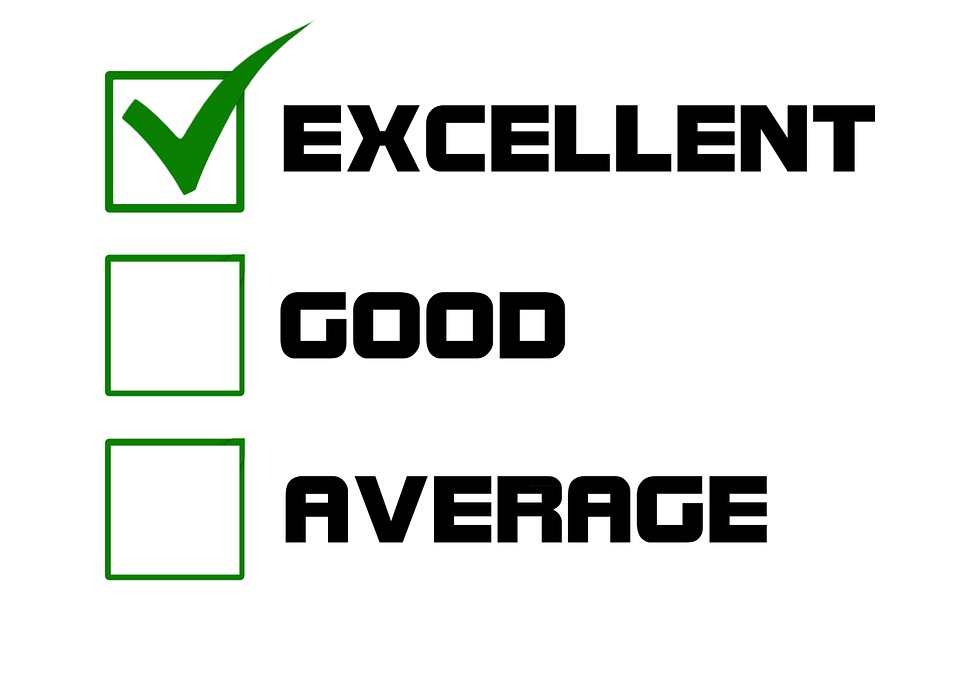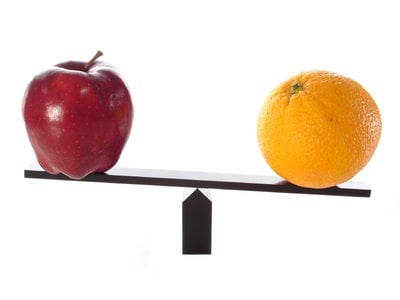
Not so happy with your score on the Old SAT? You might be thinking about retaking the test. Unfortunately for you, the redesigned version of the SAT – in this post, we’ll just call it the “New SAT” – debuted in March of this year. Which means if you retake the SAT, you’ll be taking a totally redesigned test. So you may be wondering, "Should I take the New SAT?"
This post will help you decide if your Old SAT score is really not good enough for the colleges you hope to apply to. Next, we will explain some potential challenges with studying for the New SAT, and help you decide if it’s the right step for you. Don’t sign up for the New SAT before reading this post!
Evaluating Your Old SAT Score – Is It Actually Bad?
So how do we decide if your Old SAT score is good or bad? First, we’ll briefly run through the national score rankings, and next, compare your score to colleges' SAT score averages. Finally, we will make the call on whether your Old SAT score is good or bad!
National SAT Percentile Rankings
A percentile ranking is a comparison of your score with every other SAT score, and it shows how much better – or worse – you did than everyone else. For example, if your score is in the 50th percentile, 50% of test takers did better than you, and 50% did worse. If your score is in the 30th percentile, 70% of test takers did better than you, and 30% did worse. If you’re in the 90th percentile, just 10% of test-takers did better than you, and 90% did worse.
Percentile rankings are thus an easy way to compare your score with other students’ scores to get a rough sense of how good it is.
The average Old SAT score is about a 1500 composite (total) score, which means about a 500 on each section: Critical Reading, Math, and Writing. If you got a 1500 or lower, and you’re aiming to apply to selective colleges, you will most likely need to take the New SAT.
The 75th percentile is 1720, or about 570-580 per section. If you’re in the 75th percentile or higher, your SAT score will be competitive at many moderately selective schools.
The 90th percentile is 1930, or about 640-650 per section. If you’re in the 90th percentile or higher, your score will be competitive at many selective schools.
The 99th percentile is any score 2220 and higher, about 750 or higher per section. If you’re in the 99th percentile or higher, your score will be competitive at nearly all colleges and universities, even schools like the Ivy Leagues, Stanford, and MIT.
You can see the complete percentile rankings for each SAT composite score here.
Key Tip: If you haven’t already, find the percentile ranking of your Old SAT score, since it will give you a basic sense of whether your score is good or not . For example, if you have your heart set on Stanford University but you have a 50th percentile SAT score, you should definitely take the New SAT. But if you have a 90th percentile SAT score and you're applying to your local state schools, you won't have to worry about the New SAT (unless your local university has a particularly competitive honors program or merit scholarship!).
If you fall somewhere in between those two extremes, keep reading to learn how to get the most precise information about your Old SAT score's potential.
College Middle 50% Ranges
Percentiles are a useful tool for getting a rough sense of how great, or not great, your SAT score is. But the most useful information comes from the colleges you want to apply to. After all, you take the SAT to get into college!
Colleges release what are called “middle 50% ranges” to give students an idea of what kinds of SAT scores they need to be competitive. For example, let’s say a college has an SAT middle 50% range of 1500 to 1700. That means that 25% of admitted students had an SAT score lower than 1500, and 25% of admitted students had an SAT score higher than 1700, but the middle 50% had SAT scores in the range of 1500-1700.

In most cases, if your SAT score falls within a school’s middle 50% range, you have a good shot at being admitted there, as long as the rest of your application is strong. If your score is above their ranges, you have a very high chance of admission, and if your score is below, you have a smaller chance. So for a school with a 1500-1700 middle 50% range, an SAT score of 1400 would be weak, a score of 1600 would be on target, and a score of 1800 would be amazing!
So while percentiles are helpful, the most useful test of whether your SAT score is good depends on the colleges you want to apply to.
To take another example, let’s say we have two students, Student A and Student B. They both got an 1800 on the Old SAT.
Student A is applying to their local state university. Since the local state university’s middle 50% range is 1450-1700, Student A’s 1800 is more than high enough and they do not need to take the New SAT!
But let’s take Student B. They really want to get into Harvard. Harvard’s middle 50% SAT range is very, very high: 2120 to 2400! Student B's 1800 is quite low and they should definitely take the New SAT.
Key Tip: look up the SAT score ranges at the schools you are seriously interested in applying to. This will give you the best data to evaluate your Old SAT score with! In the next section, we will show you how to take those score ranges and decide if your Old SAT score needs to be replaced with a New SAT retake.
Deciding If Your Score Is Low
Now that you’ve looked up the middle 50% ranges at colleges you’re interested in, you’re ready to decide if your score is too low. Focus on the schools on your list with the highest score ranges as you make this decision, because it will give you the most options.
For example, let’s say Student C got an 1800 on the Old SAT, and these are the schools they are most interested in, along with those schools' middle 50% SAT score ranges:
- UPenn: 2050-2320
- Penn State: 1600-1910
- Temple University: 1510-1840
While that 1800 SAT score is at the top of Temple’s ranges and comfortably within Penn State’s ranges, it is not high enough to be competitive at Penn. If Student C really wants to go to Penn (and any other highly selective schools) they should take the New SAT.
Let’s take another example, Student D. Let’s say Student D wants to go to the same three schools, and scored exactly a 2200 composite on the Old SAT. Their score is well above Penn State and Temple’s ranges, and well within Penn’s. However, since Penn is a highly selective school, to maximize your chances, it’s best to have an SAT score near the top or above the middle 50% range to give yourself the best chance – so in this case, a 2320 or higher.
While we would normally advise a 2200 scorer to consider retaking the SAT to get into the 2250+ range, for Student D, it might not be worth the significant time it would take to learn about and study for the New SAT just to get those extra 50 composite points. So unless Student D decides to add an even more competitive school to their list, like Harvard or Stanford, they should not take the New SAT and leave their 2200 composite alone!
Key Tip: Arrange your target schools in a list from highest SAT middle 50% range to lowest, like we did above. Next, compare your SAT score to the middle 50% range at the most competitive school on your list.
- If your score is below their middle 50% range: Definitely take the New SAT.
- If your score is within their middle 50% range: Take the New SAT if it’s a highly selective school, don’t take it if it’s a moderately selective school or lower.
- If your score is above their middle 50% range: Don’t take the New SAT.
How an Old SAT Score and New SAT Score Will Be Compared by Colleges, and Why This Matters
One other factor to take into consideration as you sign up for the New SAT is superscoring. What is superscoring? Superscoring combines your highest section scores from different SAT dates to create the highest possible composite score. Here’s an example:
- Test 1: 700 Critical Reading, 600 Math, 650 Writing, Composite = 1950
- Test 2: 650 Critical Reading, 700 Math, 700 Writing, Composite = 2050
- Superscore: 700 Critical Reading 700 Math, 700 Writing, Composite = 2100
Unfortunately, at many colleges, the Old SAT and New SAT won’t be superscored together, which puts you at a disadvantage if you have one Old SAT score and one New SAT score. Here are quotes from just a few college's admission websites about how they are treating Old and New SAT scores:
- Dartmouth: "...we will consider your highest 'superscored' results from either the current or the redesigned SAT; we will not combine scores from both versions."
- Johns Hopkins: "We will combine the highest section scores from any test date within the current SAT and any test date within the redesigned SAT, but not across the two tests."
- Penn: “Current SAT scores will only be superscored with other current SAT results. Redesigned SAT scores will only be superscored with redesigned SAT test results.”
- Stanford: "We will superscore the results from the current and redesigned SAT separately."
- Vanderbilt: "Vanderbilt will not super-score between the existing SAT and the revised SAT, but we will super-score within the same type of SAT.”
This is just a handful of schools, but their policies reveal the trend towards not superscoring the Old and New SAT. We have seem some different policies out there, so make sure to look up the superscoring policy between Old and New SAT scores at any colleges you are planning to apply to. But in general, it's safe to assume that for many schools on your list, the Old SAT and the New SAT will be treated as separate entities.

For many schools, the New SAT and Old SAT are like apples and oranges: too different to compare.
Say that you get these two scores on the Old and New SAT:
- Test 1 (Old SAT): 700 Critical Reading, 600 Math, 650 Writing, 1950 Composite
- Test 2 (New SAT): 650 Evidence-Based Reading and Writing, 700 Math, 1350 Composite
Even though you got your Math score up to a 700 on the New SAT, it will not be superscored with your old SAT score to make a higher composite.
Why does this matter? It means that if you retake the New SAT, you have to work extra hard to make sure both your Math and Reading/Writing scores go up, so that your composite score is decidedly higher on the New SAT and the retake is most helpful to you.
If you only increase one section’s score and/or end up with a composite score that is at the same or lower percentile ranking, the retake won’t help you that much.
Unlike a retake for the Old SAT, on which you could study the hardest for one section so that your superscore would be strong, you need to work for all-around success on the New SAT. And this won’t necessarily be an easy task, as we’ll see!
In short, if you need to take the New SAT, you will have to devote a significant amount of time to studying to make sure your new score is strong!
Why the Time Commitment for a New SAT Retake Will Be Higher than an Old SAT Retake
Studying for a New SAT retake will be challenging. If you were retaking the Old SAT again, you would be at an advantage, in that you would already be familiar with the test, its timing, topics tested, etc. So when you studied, you could just go straight to your problem areas and work to improve them.
For the New SAT, you have to go back to the drawing board – the format and timing have both completely transformed, as well as question types and even content.

Prepare to spend plenty of time with your prep books and practice questions.
For example, on the old SAT Critical Reading section, you had to study vocabulary words, many that were obscure, to be ready for the sentence completion questions. However, on the new SAT Reading section, there are no more sentence completion questions! That means any obscure vocabulary you crammed into your brain before you took the Old SAT won’t help you here.
But you need to be prepared for new question types, including evidence support questions. Evidence support questions are two-part. The first question asks you about something about a passage, and the second question asks you which lines in the passage give you evidence for your answer! These questions are quite tricky, because if you get the first question wrong, you will likely miss the second one, as well.
And that is just one of many new question types to expect. (Read a complete breakdown of the New SAT here.) To be ready for the test, you need to put in sufficient study time, especially since, as we explained above, your old SAT score will not be superscored with whatever you get on the New SAT.
So exactly how long should you study for? Follow these steps to find out.
-
Find your target SAT score for the Old SAT. Old SAT scores will still be used for middle 50% ranges on college websites for at least another year since the New SAT hasn’t been offered long enough to be factored into college admissions data.
-
Translate your Old SAT target score to a New SAT target score, following the method in this article.
-
Take a New SAT practice test and determine how much you need to improve to reach your target score.
-
Based on the chart below, estimate the number of hours you will need to study to achieve your target score. I suggest adding on about 5 hours to each estimate to account for learning about the new test.
0-30 Point Improvement: 10 hours
30-70 Point Improvement: 20 hours
70-130 Point Improvement: 40 hours
130-200 Point Improvement: 80 hours
200-330 Point Improvement: 150 hours+
Whatever you do, do not take the New SAT without sufficiently studying for it – if you assume you can just wing it since you’ve already taken the SAT once, you could easily end up with a New SAT score that’s lower than your Old SAT score!
For more on studying for the New SAT, see our post on how to study effectively for the redesigned test.
Another Possibility: Think About the ACT
Since studying for the New SAT is basically preparing for an all-new test, you may want to consider switching to the ACT, since there are more practice tests and better prep materials available for the older test.
The best way to decide whether to jump off the SAT ship would be to take one ACT practice test and one new SAT practice test, and see which test you do the best on and feel the most comfortable with.
How will you compare your results? After you take a practice version of both tests, use the table in our post about SAT to ACT score conversion, which uses a 1600 total SAT composite, to see whether your New SAT or ACT score is higher. (Also keep in mind this is an estimation since we do not have any percentile data on the New SAT yet, so if your scores are quite close, read on to learn about differences between the SAT and ACT to help you decide.)

The grass may not actually be greener on the other side...
Let’s look at an example. Say you take an ACT practice test and a New SAT practice test. These are your composite scores for each:
- ACT: 28
- New SAT: 1100
Using the conversion table, that ACT score would be about a 1260 on the SAT, while that SAT score would be about a 24 on the ACT. The ACT score of 28 is a lot stronger, so it would be wiser to focus on the ACT instead of the SAT – you may be able to get that 28 up to a 30, if not a 33 or higher (99th percentile)!
Also be aware of these key differences between the ACT and the New SAT, especially if you get a similar score on both practice tests and aren't sure which test to focus on:
-
Reading: while both reading sections have you read and answer questions about long passages, including a set of paired passages, SAT Reading could be trickier because it will include a passage from classic literature or a US founding document, which contains harder language, and it contains evidence support questions, which we discussed above as one of the trickier additions to the New SAT.
-
Math: ACT Math has far more geometry and trigonometry, is grouped into one big 60-minute section, and you can use a calculator the whole time. SAT Math has less geometry, has a shorter no-calculator section and then a calculator section, and still has some grid-in questions (questions where you fill in the answer rather than choosing from a multiple-choice set).
-
Writing: The ACT and New SAT Writing sections are very similar. They both have a long passage format that has you correct mistakes in grammar and usage. ACT Writing has more questions, which could change your approach, and also contains some big-picture questions, while SAT Writing does not.
-
Science: A major difference between the two tests is that the ACT has a whole science section while the SAT does not. The SAT sort of makes up for this by including charts and data analysis in their other sections, so they’ve rolled some of the ACT science skills into other parts of the test. That said, if you’re really good at reading and understanding charts and data, you might benefit from the ACT since you’ll have a whole section about that.
See more on these differences in our post New SAT vs ACT: Full Breakdown.
After you’ve compared your performance on the New SAT and ACT practice tests, and learned more about both tests, you can decide which test to focus on. It may be that you actually like the ACT better than the new SAT, in which case it makes more sense to study for it!
One additional benefit to taking the ACT and doing well is this: since colleges only require the SAT or the ACT, you wouldn’t even have to send in your mediocre old SAT score, just your ACT score.
Furthermore, you would avoid any potential bumps in the road as College Board rolls out the new SAT (longer waits to get your score after the first few tests, confusion at testing centers by proctors used to the Old SAT, etc). So if you've decided your Old SAT score is low and you need to retake the New SAT, make sure to consider the ACT as well. It may turn out to be the better option!
Bottom Line: Should I Take the New SAT?
So who should take the New SAT (or ACT!), and who should skip it? This is our advice.
Take the New SAT if…
-
Your Old SAT score is below the middle 50% ranges for the most competitive school you are applying to.
-
You are applying to a highly selective school and your Old SAT score is within, but not above, their score ranges.
-
You have time to study extensively! Your retake will not be worth it if you get a comparatively lower score.
Don’t take the New SAT if…
-
Your Old SAT score is within or above the middle 50% ranges for the most competitive school you are applying to.
-
You aren't willing to put in the necessary effort to improve.
-
You decide to take the ACT instead.
What’s Next?
We talked about a few changes between the Old and New SAT in this post, but I recommend reading a complete breakdown of the changes at our complete guide to the New SAT before you decide whether to take the test or not. This will give you even more information to help you tackle the New SAT with confidence.
Are you avoiding the ACT because you think colleges don’t think it’s as good as the SAT? Learn exactly what the Ivy League and other top schools think of the ACT.
How exactly are colleges dealing with the transition to the New SAT? Read interviews with over 30 colleges about the New SAT, including which version of the test they are accepting, how they are comparing Old and New SAT scores, and more.











